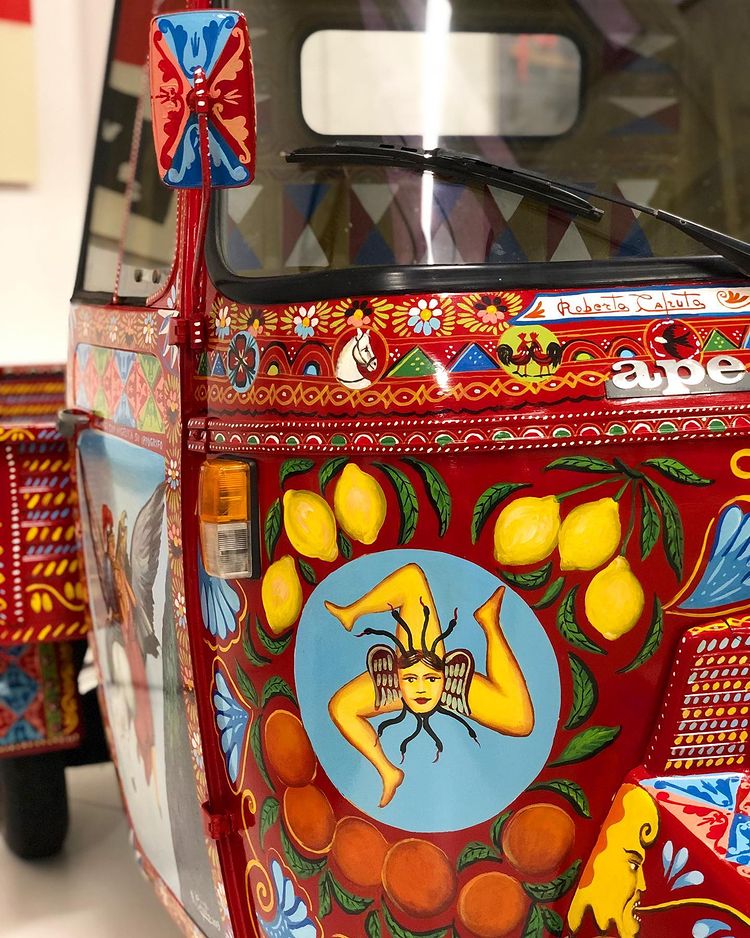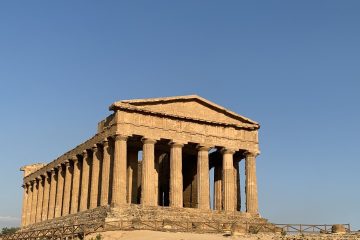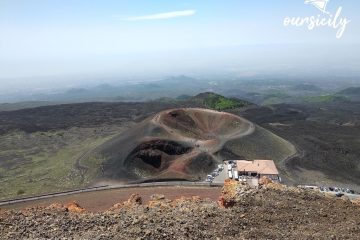Trinacria
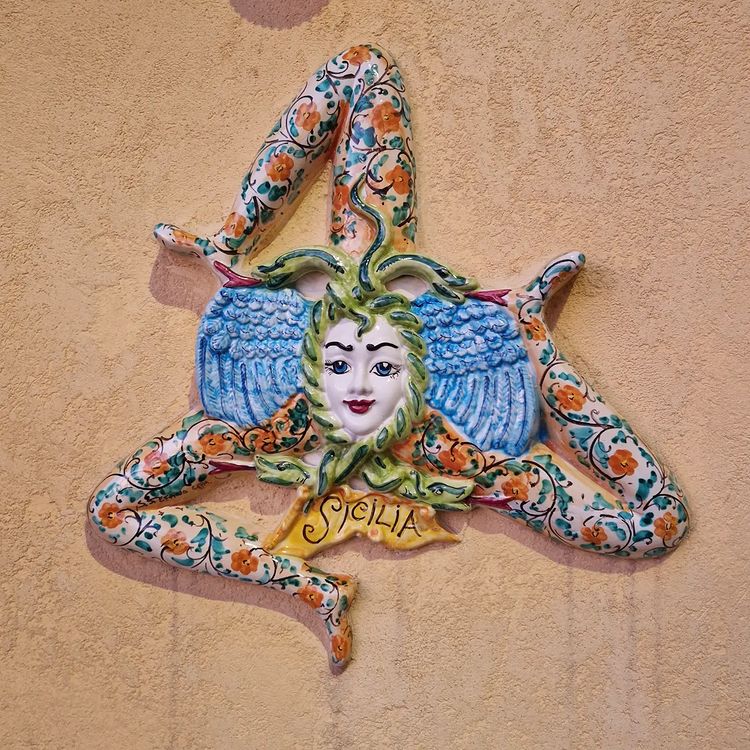
History and culture
Trinacria is the ancient name for the island of Sicily. The name comes from the Greek word “triskeles,” meaning three legs or three-cornered, which refers to the triangular shape of the island. The symbol of Trinacria, which features three bent legs joined together at a central point, has become synonymous with Sicily and is often used as a representation of the island’s identity.
To the early Greeks, it represented eternity. Called Triskelion, it was three legs inside the wheels, turning and spinning constantly. As Sicily’s identity revolved more and more around its island nature, the three legs came to represent its three promontories or corners of the island.
The number three plays an important role in so many histories.
Trinacria has a long and fascinating history. The island was inhabited by various groups of people over the centuries, including the Greeks, Romans, Arabs, Normans, and Spaniards. Each of these groups left its mark on the island, contributing to its unique cultural heritage.
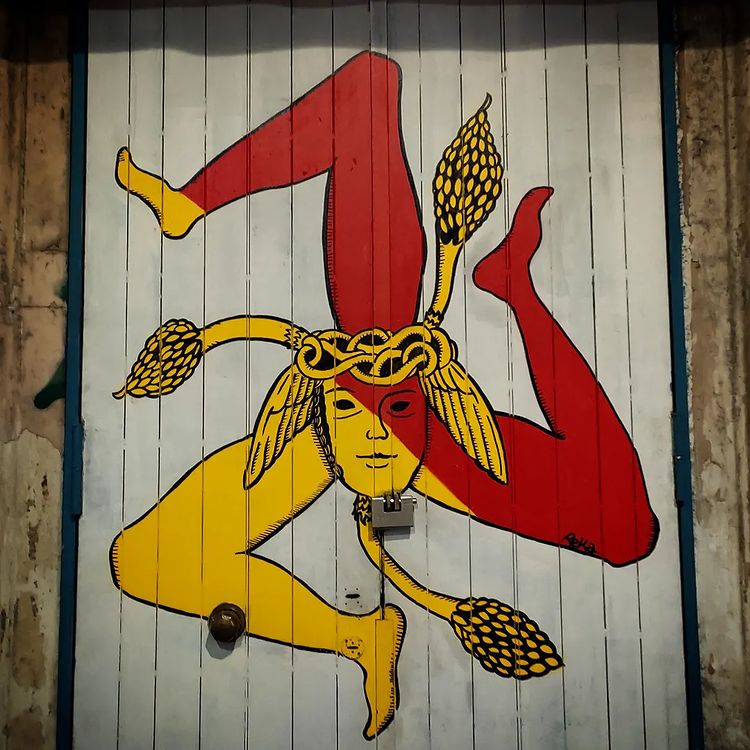
The Greeks were the first to settle in Trinacria, founding colonies in the 8th BC. They established a number of city-states, including Syracuse, which became one of the most powerful and influential cities in the Mediterranean world. The Greeks were followed by the Romans, who conquered the island in the 3rd century BC and made it a province of the Roman Republic.
In the Middle Ages, Trinacria was ruled by a succession of foreign powers. The Arabs, who conquered the island in the 9th century CE, brought with them a rich cultural legacy that is still evident in Sicily today. They were followed by the Normans, who established a powerful kingdom in Sicily in the 12th century CE. The Normans were known for their love of art and culture, and they encouraged the development of the arts and sciences in Sicily.
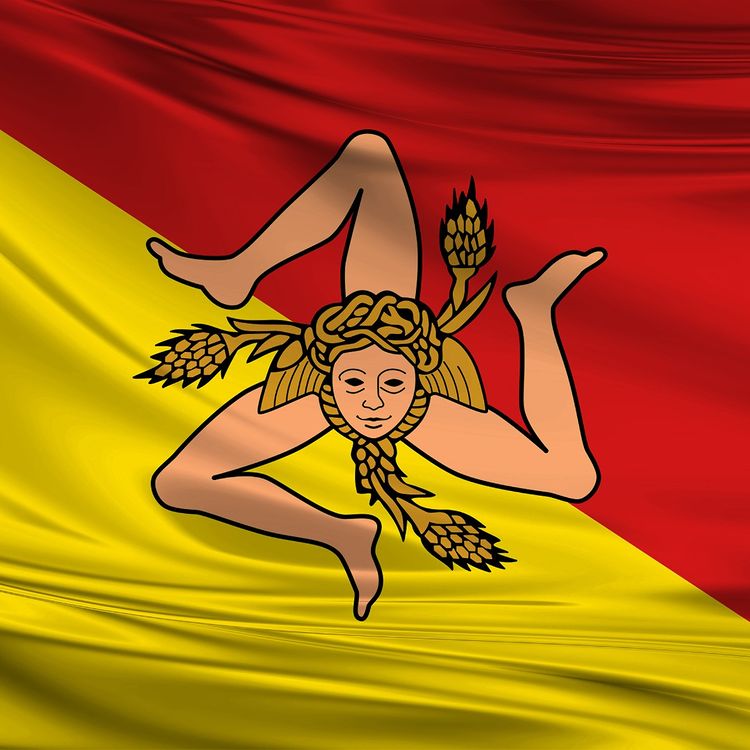
The Trinacria first appeared in 1282 in the Sicilian flag during the Vespers Revolution.
The banner’s task was to represent Sicily in revolt against the Angevins. Its colors echo those of the city of Palermo, the leader of the revolt, and Corleone, one of the most important agricultural centers of the time.
In conclusion, Trinacria is a symbol of the rich cultural heritage of Sicily. Its history is a testament to the island’s resilience and adaptability, as it has survived countless invasions and conquerors over the centuries.
